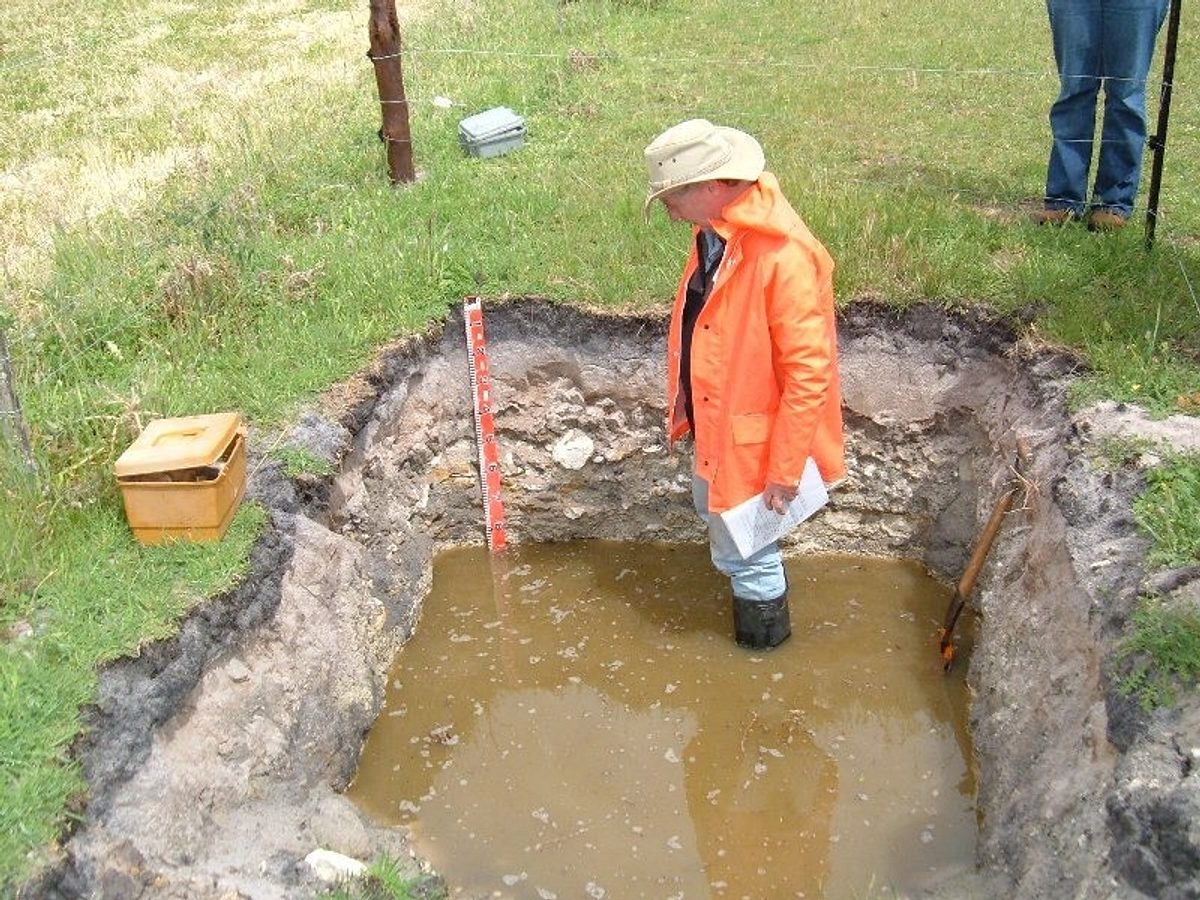Describing soil and land
A range of important characteristics of our state's soil and land assets have been described and mapped to improve the understanding and management of these vital resources. These characteristics are known as ‘soil and land attributes’. Quantitative and semi-quantitative attribute data have been produced which are described within a soil landscape map unit framework, whereby map units contain data-rich, spatially undefined components. This approach allows the complexity and diversity of soil and landscapes to be captured at an appropriate scale.
The soil and land attribute spatial datasets are in two key formats: ‘SA-format’ and ‘National-format’. These reflect alternative sets of descriptive attributes and, importantly, differences in the type of conceptual element that is being described (ie landscape components vs soil components). This is explained further via the links below and in this soil and land mapping fact sheet.
Both SA-format and National-format datasets provide comprehensive and consistent data that can be used for comparing conditions across the state, and in a range of environmental assessments and models. Both datasets have been developed by the department Soil and Land Program following standards and criteria outlined in Maschmedt 2002 for SA-format data, and McKenzie et al. 2012 for National-format data (as used in the Australian Soil Resource Information System).
For SA-format data, an innovative system has been developed for assessing specific soil and land attributes. This involves a rating or classification to highlight different conditions within a given attribute. For example, salinity is rated from low to extreme using classes 1 to 8, which indicate the level of severity of salinisation (from nil to a bare salt pan). This system is based on the US Department of Agriculture generic land classification scheme, but greatly expands on the utility of this scheme by applying classes to specific attributes. In general, a rating of 1 indicates that attribute condition provides little or no limitation to most land uses, while higher ratings indicate greater land use limitations caused by the condition associated with the attribute in question.
The table below provides an example of the rating or classification system used for the attribute ‘watertable-induced salinity’. A full list of attributes (together with statewide maps and selected fact sheets) can be seen via the links below.
Salinity category | Classification criteria for ‘watertable-induced salinity’ | Class† | ||
|---|---|---|---|---|
Watertable | Vegetative indicators | Indicative ECe (dS/m)‡ | ||
low | none | No evidence of salt effects. | <2 (surface) <4 (subsoil) | 1s |
moderately low | usually deeper than 2 m | Subsoil salinity – deep-rooted horticultural species and pasture legumes affected. | <4 (surface) 4-8 (subsoil) | 2s |
moderate | shallower than 2 m, capillary effect reaches into root zone | Subsoil salinity and raised topsoil levels – many field crops and lucerne affected. Halophytic species such as sea barley grass are often evident. | 4-8 (surface) 8-16 (subsoil) | 3s |
moderately high | seasonally within 1 m of the surface | Too salty for most field crops and lucerne. Halophytes are common: especially sea barley grass; curly rye grass and salt-water couch also commonly occur. Strawberry clover productivity is diminished. | 8-16 (surface) 16-32 (subsoil) | 4s |
high | seasonally near surface | Land dominated by halophytes with bare areas. Sea barley grass often dominates; salt-water tea-tree or saltbush may be prevalent; samphire and ice plant are often evident. Land will support highly salt tolerant productive species such as puccinellia and tall wheat grass. | 16-32 (surface) >32 (subsoil) | 5s |
very high | near surface most of the year | Land is too salty for any productive plants and supports only samphire, salt-water tea-tree (high rainfall areas) or other extreme halophytes. | >32 (surface) any (subsoil) | 7s |
extreme | near or at surface most of year | Bare salt-encrusted surface. | any | 8s |
Source: Hall et al. 2009, Appendix 5.
† ECe = electrical conductivity of a soil saturation extract, measured in decisiemens per metre.
‡ The letter ‘s’ indicates that classes relate specifically to ‘watertable-induced salinity’. There is no class 6s (class 6 is generally associated with limitation due to excessive slope or rockiness, and is not applicable for this attribute).
Queries regarding the SA-format or National-format attribute datasets should be directed to:
Email: DEWSoilsInfo@sa.gov.au
Find out more:
- SA-format soil and land attributes
- National-format (ASRIS) soil and land attributes.
- See our data on NatureMaps > Soils
- Fact sheets, Land system reports, and more on Enviro Data SA
References
Hall JAS, Maschmedt DJ and Billing NB, 2009, The soils of Southern South Australia. The South Australian Land and Soil Book Series, Volume 1; Geological Survey of South Australia, Bulletin 56, Volume 1. Government of South Australia. Land Resources Soils (environment.sa.gov.au)
Maschmedt DJ, 2002, Assessing Agricultural Land. Soil and Land Information, Department of Water, Land and Biodiversity Conservation, Government of South Australia. Assessing Agricultural Land
McKenzie NJ, Jacquier DW, Maschmedt DJ, Griffin EA and Brough DM, 2012, The Australian Soil Resource Information System (ASRIS) – Technical specifications. Australian Collaborative Land Evaluation Program (ACLEP). Prepared on behalf of the National Committee on Soil and Terrain.



